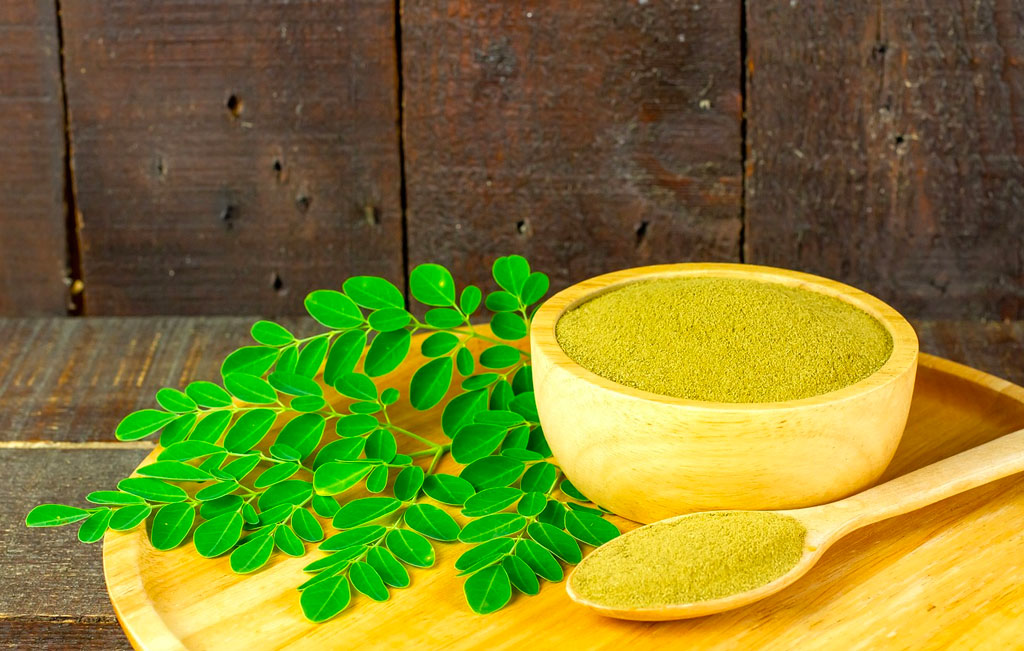Type 2 diabetes is a chronic metabolic disorder that affects millions of people worldwide. It occurs when the body becomes resistant to the effects of insulin or fails to produce enough insulin to maintain normal blood sugar levels. In this extensive guide, we will explore the causes, symptoms, risk factors, complications, effective management strategies, and natural ways to manage type 2 diabetes.

Causes of Type 2 Diabetes
- Obesity: Excess body weight, especially around the abdomen, is a significant risk factor for developing type 2 diabetes. Adipose tissue releases inflammatory substances that contribute to insulin resistance.
- Sedentary Lifestyle: Lack of physical activity and a sedentary lifestyle can contribute to insulin resistance and increase the risk of developing type 2 diabetes.
- Genetics: Family history and genetic factors play a role in the development of type 2 diabetes. Having a close family member with the condition increases the risk.
- Insulin Resistance: Cells in the body become resistant to the effects of insulin, leading to elevated blood sugar levels.
- Age and Ethnicity: Advancing age and certain ethnicities, such as African, Hispanic, Asian, and Native American, have a higher risk of developing type 2 diabetes.
Symptoms of Type 2 Diabetes
- Frequent Urination: Increased thirst and frequent urination are common symptoms of type 2 diabetes as the body tries to eliminate excess sugar through urine.
- Excessive Hunger: Due to insulin resistance, cells are unable to utilize glucose effectively, leading to persistent hunger.
- Fatigue: Individuals with type 2 diabetes often experience persistent fatigue and lack of energy.
- Blurred Vision: High blood sugar levels can cause fluid to be pulled from the lenses of the eyes, leading to blurred vision.
- Slow Healing: Wounds and infections take longer to heal in individuals with type 2 diabetes due to impaired blood circulation and compromised immune function.
Risk Factors for Type 2 Diabetes
- Age: The risk of developing type 2 diabetes increases with age, especially after the age of 45.
- Family History: Having a parent or sibling with type 2 diabetes increases the likelihood of developing the condition.
- Obesity: Being overweight or obese significantly raises the risk of type 2 diabetes.
- Sedentary Lifestyle: Lack of regular physical activity increases the risk of developing type 2 diabetes.
- High Blood Pressure and High Cholesterol: Having high blood pressure or elevated cholesterol levels increases the risk of developing type 2 diabetes.
Complications of Type 2 Diabetes
- Cardiovascular Disease: Individuals with type 2 diabetes are at a higher risk of developing heart disease, stroke, and other cardiovascular complications.
- Nerve Damage (Neuropathy): Elevated blood sugar levels can damage the nerves, leading to numbness, tingling, and pain, usually in the hands and feet.
- Kidney Disease (Nephropathy): Diabetes can damage the kidneys, impairing their ability to filter waste and toxins from the blood.
- Eye Complications (Retinopathy): High blood sugar levels can damage the blood vessels in the retina, leading to vision problems and potentially blindness.
- Foot Complications: Poor circulation and nerve damage increase the risk of foot ulcers, infections, and, in severe cases, amputation.
Effective Management of Type 2 Diabetes
- Lifestyle Modifications: A healthy diet, regular physical activity, weight management, and stress reduction are crucial for managing type 2 diabetes.
- Medications: Depending on the individual’s needs, doctors may prescribe medications such as oral antidiabetic drugs, injectable medications, or insulin therapy to control blood sugar levels.
- Blood Sugar Monitoring: Regular monitoring of blood sugar levels helps individuals with type 2 diabetes track their progress and make necessary adjustments to their treatment plan.
- Healthy Eating: Adopting a well-balanced diet that is rich in fiber, whole grains, lean proteins, and healthy fats while limiting processed foods, sugary beverages, and excessive carbohydrates is essential for managing blood sugar levels.
- Regular Physical Activity: Engaging in regular exercise, such as brisk walking, cycling, or swimming, helps improve insulin sensitivity, aids in weight management, and promotes overall cardiovascular health.
- Stress Management: Stress can impact blood sugar levels, so implementing stress-reduction techniques like meditation, deep breathing exercises, or engaging in hobbies can be beneficial.
- Regular Check-ups: Regular visits to healthcare professionals are important for monitoring blood sugar control, assessing complications, and adjusting treatment plans if necessary.
- Diabetes Education: Seeking education and support from healthcare professionals or diabetes educators can empower individuals to better manage their condition and make informed decisions about their health.
- Blood Pressure and Cholesterol Control: Maintaining healthy blood pressure and cholesterol levels through lifestyle modifications and medication, if necessary, can reduce the risk of cardiovascular complications.
- Quit Smoking: Smoking increases the risk of developing various complications associated with type 2 diabetes. Quitting smoking is vital for overall health improvement.
Natural Ways to Manage Type 2 Diabetes
Managing type 2 diabetes naturally involves incorporating lifestyle modifications and utilizing home remedies to help control blood sugar levels. Here are some strategies and home remedies that may be beneficial:
Healthy Diet:
- Consume a balanced diet rich in fruits, vegetables, whole grains, lean proteins, and healthy fats.
- Avoid sugary foods, refined carbohydrates, processed foods, and excessive salt intake.
- Include foods with a low glycemic index that help regulate blood sugar levels.
- Incorporate fiber-rich foods like legumes, oats, and vegetables, as they can slow down the absorption of sugar.
- Drink plenty of water to stay hydrated and support overall health.
Regular Physical Activity:
- Engage in regular exercise such as walking, jogging, cycling, swimming, or yoga.
- Aim for at least 30 minutes of moderate-intensity exercise most days of the week.
- Physical activity helps improve insulin sensitivity, lower blood sugar levels, and manage weight.
Weight Management:
- Maintain a healthy weight or work towards achieving a healthy weight through a combination of a balanced diet and regular exercise.
- Losing excess weight can improve insulin sensitivity and reduce the risk of complications.
Stress Reduction:
- Practice stress management techniques like meditation, deep breathing exercises, yoga, or engaging in hobbies.
- Chronic stress can elevate blood sugar levels, so finding ways to relax and unwind is essential.
Herbal Remedies:
Some herbal remedies may help manage blood sugar levels, but it’s important to consult with a healthcare professional before using them, especially if you are taking medication. Examples include:
- Cinnamon: Research suggests that cinnamon may help lower blood sugar levels.
- Fenugreek: Fenugreek seeds or supplements have shown the potential in improving glucose tolerance.
- Gymnema Sylvestre: This herb may help reduce blood sugar levels and improve insulin sensitivity.
- Aloe Vera: Aloe vera gel or juice may have a positive impact on blood sugar control.
- Bitter Melon: Consuming bitter melon in various forms has been associated with improved blood sugar levels.
Adequate Sleep:
- Prioritize getting enough sleep to support overall health and hormonal balance.
- Lack of sleep can affect insulin sensitivity and lead to imbalanced blood sugar levels.
Regular Monitoring:
Regularly monitor blood sugar levels to track progress and make necessary adjustments to lifestyle or treatment plans.
Support and Education:
Seek support from healthcare professionals, diabetes educators, or support groups to gain knowledge, share experiences, and stay motivated.
Ayurvedic Medicines to Control Type 2 Diabetes
Ayurveda, the traditional Indian system of medicine, offers various herbal formulations and lifestyle recommendations to help manage type 2 diabetes. It’s important to note that before considering Ayurvedic medicines, it’s essential to consult with a qualified Ayurvedic practitioner or healthcare professional who can provide personalized guidance based on your specific health condition and requirements. Here are some commonly used Ayurvedic medicines and practices for type 2 diabetes management:
Gurmar (Gymnema Sylvestre):
Gurmar is known as the “sugar destroyer” in Ayurveda. It may help regulate blood sugar levels and reduce sugar cravings.
Bitter Melon (Momordica charantia):
Bitter melon is believed to have anti-diabetic properties. It may help lower blood sugar levels and improve insulin sensitivity.
Triphala:
Triphala is a combination of three fruits (Amalaki, Bibhitaki, and Haritaki) known for its antioxidant and anti-inflammatory properties. It may help improve digestion and manage blood sugar levels.
Amla (Indian Gooseberry):
Amla is rich in vitamin C and antioxidants. It may help support pancreatic health, improve insulin sensitivity, and manage blood sugar levels.
Vijaysar (Pterocarpus Marsupium):
Vijaysar is traditionally used for managing diabetes. It may help regulate blood sugar levels and improve insulin action.
Turmeric (Curcuma longa):
Turmeric contains curcumin, which has anti-inflammatory and antioxidant properties. It may help improve insulin sensitivity and reduce inflammation.
Yoga and Meditation
Ayurveda emphasizes the importance of holistic practices such as yoga and meditation. Regular practice can help reduce stress, improve insulin sensitivity, and support overall well-being.
Dietary Recommendations
Ayurveda emphasizes a balanced diet that includes whole grains, fresh fruits and vegetables, lean proteins, and healthy fats. It may also recommend avoiding or reducing the intake of processed foods, refined sugars, and unhealthy fats.
It’s crucial to remember that Ayurvedic medicines should be used under the guidance of a qualified practitioner. They can help determine the appropriate dosage, monitor your progress, and make necessary adjustments to your treatment plan. Additionally, Ayurveda should complement conventional medical care and should not be used as a substitute for prescribed medications or medical advice.
Always inform your healthcare provider about any Ayurvedic medicines you are taking to ensure safe and effective integration with your overall diabetes management plan.
Yoga Asanas to help with Type 2 Diabetes

Yoga is a holistic practice that combines physical postures (asanas), breathing exercises (pranayama), and meditation to promote overall well-being. Here are some yoga asanas that may be beneficial for managing type 2 diabetes:
Surya Namaskar (Sun Salutation):
This sequence of yoga poses helps improve blood circulation, stimulate the digestive system, and promote overall body flexibility.
Vrikshasana (Tree Pose):
This standing pose helps improve balance, strengthen leg muscles, and increase focus. It also activates the pancreas and improves insulin sensitivity.
Paschimottanasana (Seated Forward Bend):
This seated forward bend stretches the hamstrings, improves digestion, stimulates the abdominal organs, and promotes relaxation.
Dhanurasana (Bow Pose):
This backbend pose strengthens the back muscles, stimulates the pancreas and helps regulate blood sugar levels.
Bhujangasana (Cobra Pose):
This gentle backbend opens the chest, stretches the abdomen, stimulates the digestive organs, and improves blood circulation.
Ardha Matsyendrasana (Half Spinal Twist):
This seated twist helps massage the abdominal organs, improves digestion, and stimulates the pancreas.
Pranayama (Breathing exercises):
Practices like Nadi Shodhana (Alternate Nostril Breathing) and Kapalabhati (Skull Shining Breath) can help reduce stress, improve lung function, and balance the nervous system, thereby supporting diabetes management.
Shavasana (Corpse Pose):
This final relaxation pose promotes deep relaxation, reduces stress, and allows the body and mind to rejuvenate.
It’s important to note that practicing yoga should be done under the guidance of a qualified yoga instructor, especially if you are new to yoga or have specific health concerns. They can help you modify poses as needed and create a personalized yoga practice that suits your individual needs and abilities.
Remember to consult with your healthcare provider before starting any new exercise program, including yoga, to ensure it is safe and appropriate for your condition.
Moringa for Type 2 Diabetes

Moringa, also known as the “miracle tree” or “drumstick tree,” has gained popularity for its potential health benefits, including its impact on blood sugar levels. While more research is needed to fully understand the effects of moringa on diabetes management, some studies suggest that it may offer certain benefits. Here’s how consuming moringa may potentially help with type 2 diabetes:
- Antioxidant Properties: Moringa is rich in antioxidants, including flavonoids, polyphenols, and vitamin C. These compounds help combat oxidative stress and inflammation, which are associated with insulin resistance and complications of diabetes.
- Blood Sugar Regulation: Some studies have shown that moringa may have blood sugar-lowering effects. It may help improve insulin sensitivity and glucose uptake by the cells, leading to better blood sugar control.
- Lipid Profile Improvement: Moringa may also have positive effects on lipid metabolism. It has been found to reduce cholesterol levels and improve lipid profiles, which are important factors in managing diabetes and preventing cardiovascular complications.
- Nutrient Content: Moringa is highly nutritious and contains essential vitamins and minerals, including vitamin C, vitamin E, magnesium, and zinc. A well-nourished body is better equipped to maintain optimal blood sugar levels and overall health.
Managing type 2 diabetes requires a multi-faceted approach that includes lifestyle modifications, medication, regular monitoring, and ongoing support. By making positive changes in diet, exercise, stress management, and following a comprehensive treatment plan, individuals with type 2 diabetes can effectively control their blood sugar levels, reduce the risk of complications, and lead a fulfilling and healthy life.
Remember, it is important to consult with healthcare professionals for personalized advice and guidance in managing type 2 diabetes. With proper care, education, and commitment to a healthy lifestyle, individuals with type 2 diabetes can successfully manage their condition and minimize its impact on their overall well-being.
You May Also Like:
The Benefits of Practicing Yoga: Improve Mind, Body, and Spirit
How to Lower Blood Pressure Immediately at Home: 7 Natural Remedies
What causes Fatty Liver and Remedies for Healthier one


